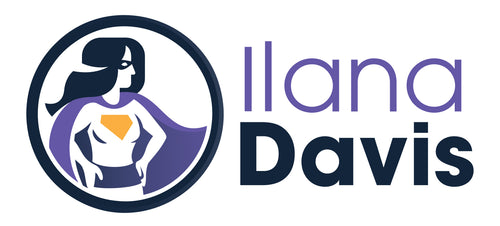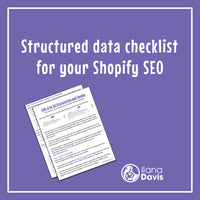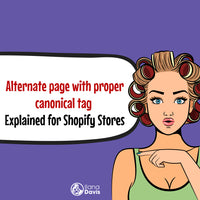How to get multiple images in Google Search results
When looking at your products in Google search, you'll likely see product images shown in two common thumbnail styles.
The first and most common you likely see for your product images are a single image thumbnail.

The second and more illustrious is the multiple image thumbnails.

So how does one get the multi-image thumbnails to show up for your website? The answer isn't simple.
Multiple images like that in the search results are part of Google's algorithm. There's not one thing you can do to make them appear. Sorry, that's probably not what you want to hear but it's the truth.
I've been doing a lot of research on how to get multiple images to appear and there is no consistency.
It's not structured data
There is a lot of speculation that adding structured data to the collection or category pages is a surefire way to get multiple images to show up. That is not true.
Google's guidelines say they only want markup on single products and not a collection of products. This is why JSON-LD for SEO only adds the product structured data on the individual product pages and not to collection pages.
"Use markup for a specific product, not a category or list of products. For example, “shoes in our shop” is not a specific product. Currently, product rich results only support pages that focus on a single product. We recommend focusing on adding markup to product pages instead of pages that list products or a category of products."
The platform is irrelevant
Looking at Shopify stores all day long, there are some stores that see multiple images and some that don't. But I also look at non-Shopify stores and see similar results.
It's perhaps more common for me to see multiple images on larger, more established websites like Etsy, Macy's, Walmart, Target, etc. None of which share any similarities in their platform.
That is not meant to imply a custom-built website is needed. It's absolutely not! My point is that there is no consistency. So you could invest thousands of dollars or thousands of hours and still not see the multi-image thumbnails for your store.
What can I do to influence multiple image thumbnails in search results?
Some things I've noticed that may help with multiple images in search results are:
1. Content
Whether your goal is to have a blog post or collection page show multi-image thumbnails, the advice is the same.
Content. Content. Content.
Make sure you have actual content on the page. If it's a collection, add paragraph text that describes the collection.
Consider the context as well.
If you sell red rain boots, use the keyword red rain boots so that when someone searches, Google knows that's what your collection is all about.
2. Use clear titles
Don't forget to categorize and create relevant collections. Instead of a "Rain Boots" collection, consider a collection for "Red Rain Boots" or whatever makes sense for your product line. Just be careful not to overcategorize and consider if filters are more appropriate.

When searching for "red dress shoes", Just Men's Shoes has this multi-image thumbnail result showing up. Notice that not all shoes in the search result are red. This is likely because they have a collection page for "Dress Shoes" and Google's algorithm is awarding them for a relevant search term.

The same goes for your product titles and blog post titles. Use relevant titles and you may be rewarded for like terms.
3. Collection Size Matters
The size of your collections matters. Please do not create a collection with only one or two products. It's best build out your collections with relevant products.
I usually recommend collections have at least 5 products. However many of the collections I've seen that receive the multiple image thumbnails have well more than that. We can also derive some information from the screenshots in this article. Notice that every screenshot I've shared in this article has 7 thumbnails.
Shoot to create collections with at least 8 products and only if it's relevant to your customers.
4. Use quality alt text
Alternative text or more commonly called alt text, alt attribute, or alt tag, are the words that are shown when the image it’s applied to can’t be viewed.
Basically, if an image can’t be viewed or displayed for any reason, the text in this piece of code will appear. Google also uses alt text to better understand what's in the image.
Let's use this Target result as an example. In addition to a designated Super Mario collection, they also include descriptive product titles. Those titles are then included in the alt text of the image.

The second thumbnail in the Target screenshot is rather hard to see. Looking at the alt text for that backpack says: `Nintendo Super Mario Bros.Backpack All Over Character Print 16" Kids School Bag Black` making it super easy for Google to understand the character print.
5. Clean and clear imagery
One thing I hope you noticed in all the screenshots above is the clean and clear images.
Google seems to favor product images when the backgrounds are free of clutter. Using transparent, white, or light color backgrounds seems to be easier to qualify for the multiple image treatment. I've seen some lifestyle photos, but that's pretty rare.
Photos should be crisp, not blurry or pixelated. Google will pull images from your products and you don't get to choose which photo they use. So it's important to make sure any product image you include on the page you would be ok with that being displayed in search results.
6. Curate Collections
Customers don't always search through dozens of pages to find the product they want. Consider curating your collections in some way.
You can sort collections automatically by Best Sellers. Avoid sorting alphabetically as that is rarely helpful. Or, you can manually curate your collections if that is more appropriate.
I hope to provide more guidance in the future on how to make it easier for Google to award you with multiple images in search results. As I find more ways to make this easier, I'll be sure to let you know.
JSON-LD for SEO
Get more organic search traffic from Google without having to fight for better rankings by utilizing search enhancements called Rich Results.
Linking Llama
Link discontinued products to their best substitute. Keep discontinued products published on your website and continue to benefit from traffic to these pages.




